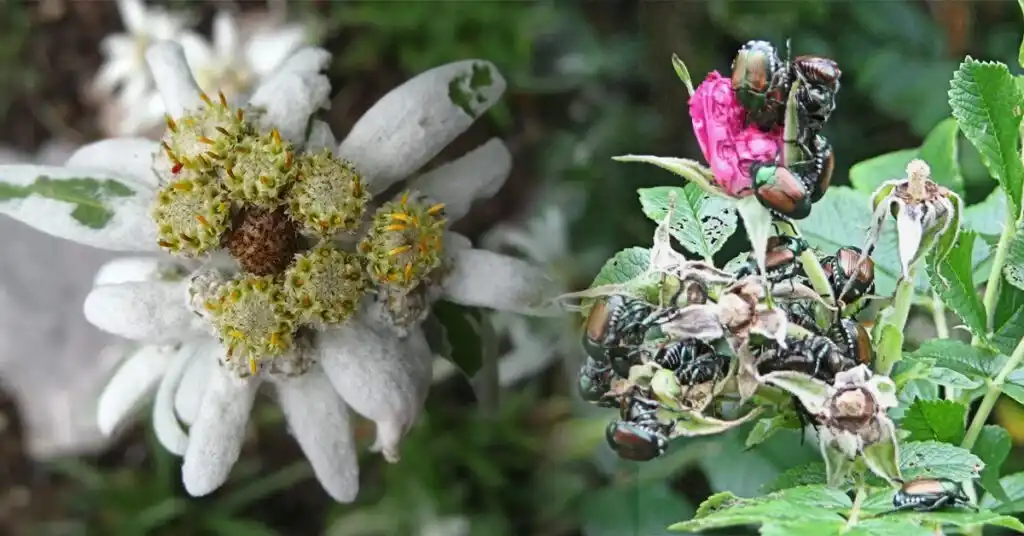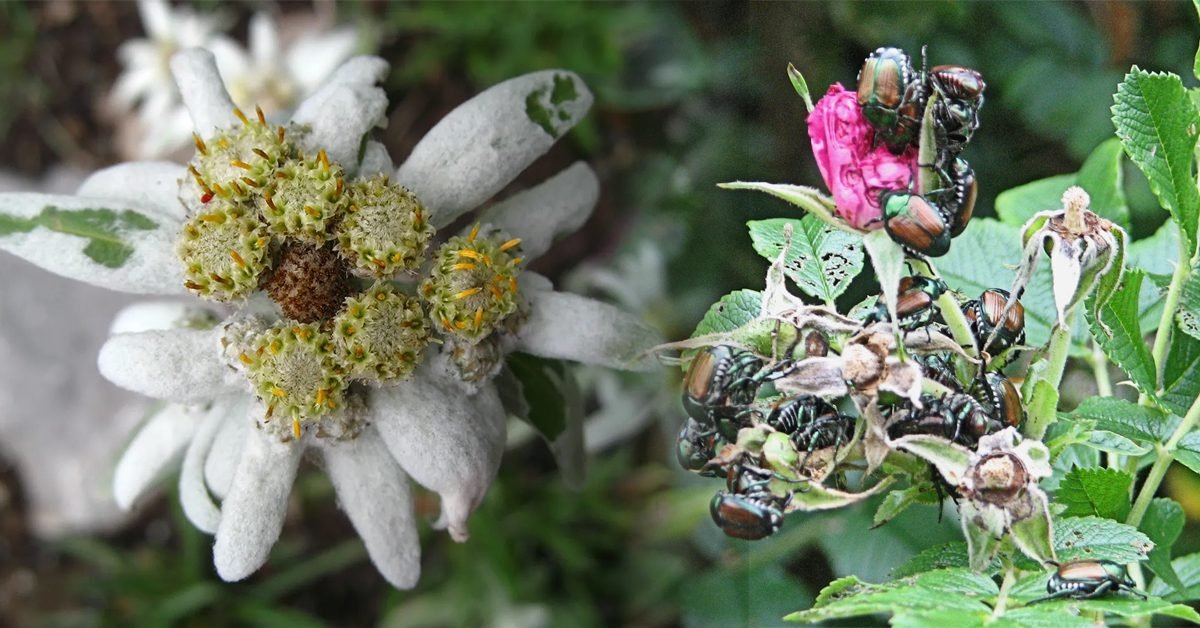
As garden enthusiasts, we know that roses are a symbol of beauty and elegance, yet they are vulnerable to an array of diseases that can mar their splendor. Keeping roses healthy and vibrant requires proactive measures against these afflictions. In this article, we delve into proven strategies to shield your roses from diseases, and protect your roses, ensuring they continue to flourish in your garden. Understanding and combating rose diseases is not just about preserving the aesthetic appeal of your garden but also about protecting the biodiversity and ecological balance within it.
We will start by identifying common pests and diseases that threaten rose bushes, providing you with the necessary knowledge to recognize early signs of trouble. Following that, our focus will shift to detailed strategies for combating pests and diseases in rose bushes, equipping you with the tools and techniques to keep your roses healthy. Throughout, we aim to offer practical advice and actionable steps that can make a real difference in the health and beauty of your roses. By the end of this article, you’ll be better prepared to tackle rose diseases head-on, ensuring your garden remains a vibrant showcase of these beloved blooms.
Identify Common Pests in Rose Bushes
Recognizing Aphid Infestation
Aphids, often found in clusters, are small insects that feed on plant sap, extracting vital nutrients from rose bushes. These pests are typically green, white, black, red, or brown and can be spotted on rose buds and new leaf shoots. Signs of aphid activity include shiny or sticky leaves, black sooty mold, and distorted or discolored foliage, indicating severe infestation and potential transmission of viruses between plants [7] [8].
Spotting Japanese Beetles
Japanese beetles are a significant threat to rose bushes, identifiable by their metallic blue-green bodies. Early detection and intervention are crucial. At the first sign of these pests, use targeted treatments like Milky Spore to kill larvae or pesticides like Sevin for adults. However, avoid using Japanese beetle traps as they can attract more beetles than they catch, potentially causing further damage [10] [11].
Detecting Spider Mites
Spider mites, though not actual spiders, cause similar damage by spinning fine webs on rose bushes. Detecting their presence early can be done by observing discolored or mottled leaves and tiny webs. A simple test involves wiping a suspected leaf between fingers, which may leave a rusty residue if mites are present. Washing infested areas with water or alcohol solutions can help manage their population [13] [15].
Identifying Thrips Damage
Thrips are minute, winged insects that cause significant damage to rose blooms, often leaving behind discolored streaks and deformed petals. Effective control measures include using biological insecticides like BotaniGard ES or introducing beneficial nematodes that target thrips at different life stages. Regular monitoring and immediate treatment are essential to prevent rapid population growth and extensive damage [16] [17].
Identify Common Diseases in Rose Bushes
Recognizing Black Spot Disease
Black spot, caused by the fungus Diplocarpon rosae, is a prevalent disease in roses, characterized by rapidly enlarging black patches on leaves. These spots are often surrounded by yellowing, which can lead to leaf drop [19] [20] [21]. To manage black spot, remove infected leaves promptly, avoid overhead watering, and apply fungicides like captan or chlorothalonil to protect new foliage [20].
Spotting Powdery Mildew
Powdery mildew, resulting from the fungus Podosphaera pannosa, manifests as a white, powdery coating on leaves and stems. It thrives in high humidity and can severely impact plant vigor if left unchecked. Manage the environment to reduce humidity, ensure good air circulation, and apply sulfur-based fungicides or biological controls like Bacillus subtilis to prevent its spread [22] [23] [24].
Detecting Rust on Leaves
Rose rust, caused by Phragmidium spp., produces orange or black spore pustules on the undersides of leaves and can cause significant defoliation. To prevent rust, ensure good sanitation by removing fallen leaves and applying fungicides or home remedies like neem oil during susceptible periods [25] [26] [27].
Identifying Rose Canker
Rose canker, primarily caused by Coniothyrium spp., appears as dark lesions on canes and is particularly problematic in cold weather. Prevent spread by using clean pruning tools and applying fungicides. Promoting healthy plant growth and using a preventative spraying program can also help manage this disease [28] [29] [30].
Combating Pests in Rose Bushes
Natural Predators and Biological Controls
We can enhance our rose bush health by inviting natural predators to our gardens. Beneficial insects such as ladybugs, lacewings, and praying mantises play a crucial role in controlling common pests like aphids and spider mites [40] [36]. Introducing plants like dill and marigolds attracts these helpful insects, providing them with necessary nectar and pollen [40].
Using Insecticidal Soap and Oils
Insecticidal soaps are effective against soft-bodied pests such as aphids, thrips, and mites, which are common nuisances for roses. These soaps need to contact the pests directly to be effective, and it’s important to apply them carefully to avoid harming beneficial insects [34]. Horticultural oils can also be used during the dormant season to manage overwintering pests [36].
Applying Systemic Insecticides
For long-term pest control, systemic insecticides can be applied as a soil drench. This method allows the insecticide to be absorbed through the roots and distributed throughout the plant, providing protection against a variety of sucking insects for several months [38] [39]. It’s crucial to follow the recommended dosage to prevent harm to the plant and minimize environmental impact.
Physical Removal and Barriers
Physical barriers such as fine netting can prevent pests from accessing rose bushes. Additionally, manually removing pests like Japanese beetles by hand or using water sprays to dislodge aphids can be effective immediate solutions [40]. Setting up sticky traps or pheromone traps also provides a chemical-free option for reducing pest populations [40].
Combating Diseases in Rose Bushes
Pruning and Sanitation
We start our disease management by deadheading old flowers and removing seriously infected leaves and branches. This not only prevents nutrient depletion but also reduces the spread of diseases like black spot fungus [47]. Proper sanitation is crucial; in fall or winter, remove all old leaves from the ground and replace mulch to prevent disease carryover [43].
Applying Fungicides
Fungicides play a pivotal role, with options like curatives for existing infections and preventatives to shield plants before damage occurs. Regular applications, as per manufacturer’s directions, help manage severe infections and maintain plant health [46].
Improving Air Circulation and Drainage
Ensuring good air circulation by spacing plants properly and pruning to allow light penetration is essential. Additionally, avoid overhead watering and ensure roses are planted in well-draining conditions to prevent diseases like powdery mildew and rust [46] [49].
Using Resistant Varieties
Selecting disease-resistant rose varieties can significantly reduce the prevalence of common diseases such as black spot and powdery mildew. These varieties require less chemical treatment, making them ideal for sustainable gardening practices [50] [52] [53].
Conclusion
Throughout this article, we have traversed the crucial journey of safeguarding roses from the clutches of common pests and diseases, delving into identifying, combating, and preventing such issues with proven strategies. From the recognition of aphids, Japanese beetles, spider mites, and thrips to understanding and tackling black spot disease, powdery mildew, rust, and rose canker, our guide has equipped garden enthusiasts with the knowledge and tools necessary to maintain the health and vibrancy of their rose bushes. Furthermore, we highlighted the importance of embracing natural predators, utilizing fungicides correctly, ensuring good sanitation, and opting for disease-resistant rose varieties as sustainable gardening practices that contribute to a thriving garden ecosystem.
As we conclude, let’s reiterate the essence of our findings and their broader implications on gardening and environmental stewardship. Keeping roses flourishing not only enhances the aesthetic appeal and biodiversity of gardens but also fosters a deeper connection with nature and a commitment to its preservation. The strategies outlined serve as a testament to the power of informed, proactive measures in disease and pest control. We encourage readers to integrate these practices into their gardening routines, fostering spaces that resonate beauty and vitality, and continuing the exploration for more eco-friendly, effective methods to protect and nurture our cherished roses.
FAQs
1. What are effective methods to prevent diseases in roses?
To prevent diseases in roses, it’s crucial to take several steps. Annually mulch your roses and provide them with nutrients after pruning by using a regular liquid fertilizer during their active growth period. Since rose sickness can persist in the soil, try to avoid planting new roses in the same spot where diseased roses were previously grown.
2. How can I enhance the disease resistance of my roses?
To make your roses more resistant to diseases, start by selecting varieties that are known for their disease resistance. Ensure good air circulation around the plants and choose a sunny location for planting. Mulch the ground around the roots to maintain soil health, and when watering, avoid getting the leaves wet to reduce the risk of disease. Regularly monitor your roses for any signs of disease and clean up fallen leaves in the autumn to prevent the spread of pathogens.
3. What is the most effective way to protect roses in cold climates?
In extremely cold or exposed areas, the best protection for climbing roses involves mounding soil around the plant. Following the first hard frost in fall, gently detach the rose from any supports, tie its canes together, and then cover the entire plant with soil to shield it from winter damage.
4. How can I maintain the health of my roses?
Keeping your roses healthy involves providing them with their essential needs. Roses thrive with at least six hours of direct sunlight each day, ideally in the morning. They require well-drained, nutrient-rich soil and moderate watering, which should be directed at the root zone rather than on the leaves to prevent diseases.
References
[1] – https://www.hgtv.com/outdoors/gardens/planting-and-maintenance/preventing-rose-diseases
[2] – https://hgic.clemson.edu/factsheet/rose-diseases/
[3] – https://www.portlandnursery.com/roses/rose-disease-control
[4] – https://hgic.clemson.edu/factsheet/rose-diseases/
[5] – https://plantsciences.tennessee.edu/wp-content/uploads/sites/25/2021/11/UT-Extension-Rose-diseases-Identification-and-management-W833.pdf
[6] – https://portal.ct.gov/caes/fact-sheets/plant-pathology/common-diseases-of-rose
[7] – https://www.gardendesign.com/how-to/aphids-on-roses.html
[8] – https://solvepestproblems.oregonstate.edu/plant-problems/rose/aphid
[10] – https://www.gardeningknowhow.com/ornamental/flowers/roses/japanese-beetles-roses.htm
[11] – https://www.torontomastergardeners.ca/askagardener/japanese-beetles-on-roses/
[12] – https://garden.org/thread/view/110917/Japanese-Beetles/
[13] – https://www.rose.org/single-post/spider-mites-for-beginners
[14] – https://www.reddit.com/r/Roses/comments/to1pm4/how_do_you_treat_spider_mites_on_rosebushes/
[15] – https://gardening.co.za/blogs/news/rose-spider-mites-a-comprehensive-guide
[16] – https://www.gardeningknowhow.com/ornamental/flowers/roses/rose-thrips.htm
[17] – https://indianapolisrosesociety.com/rose-care-tips-on-growing/thrips-101/
[19] – https://www.rhs.org.uk/disease/rose-black-spot
[20] – https://www.missouribotanicalgarden.org/gardens-gardening/your-garden/help-for-the-home-gardener/advice-tips-resources/insects-pests-and-problems/diseases/fungal-spots/black-spot
[21] – https://extension.umd.edu/resource/black-spot-disease-roses
[22] – https://www.rhs.org.uk/disease/rose-powdery-mildew
[23] – https://gardenerspath.com/plants/flowers/powdery-mildew-roses/
[24] – https://plantura.garden/uk/trees-shrubs/roses/mildew-on-roses
[25] – https://www.rhs.org.uk/disease/rose-rust
[26] – https://plantura.garden/uk/trees-shrubs/roses/rose-rust
[27] – https://gardenerspath.com/plants/flowers/rose-rust/
[28] – https://www.gardeningknowhow.com/ornamental/flowers/roses/rose-canker-fungus.htm
[29] – https://www.youtube.com/watch?v=f0Bgo78yEp0
[30] – https://www.rose.org/single-post/stumped-by-cane-canker
[31] – https://hgic.clemson.edu/factsheet/rose-insects-related-pests/
[32] – https://ucanr.edu/sites/VCMG/Fighting_Common_Rose_Pests
[33] – https://www.epicgardening.com/rose-pests/
[34] – https://www.rose.org/single-post/2018/03/20/-soaps-and-detergents-should-they-be-used-on-roses
[35] – https://garden.org/thread/view/68736/Spraying-soap-solution/
[36] – https://hgic.clemson.edu/factsheet/rose-insects-related-pests/
[37] – https://bonide.com/product/rose-shield-systemic-rose-flower-care-granules/
[38] – https://www.domyown.com/how-to-apply-systemic-insecticide-root-drench-a-863.html
[39] – https://diypestcontrol.com/bonide-systemic-rose-flower-care
[40] – https://alaskapest.com/2023/08/how-do-i-keep-pests-out-of-my-roses/
[41] – https://ucanr.edu/blogs/blogcore/postdetail.cfm?postnum=14606
[42] – https://www.plantedplaces.com/blogs/garden-lifestyle/integrated-pest-management-a-holistic-approach-to-garden-health
[43] – https://hgic.clemson.edu/factsheet/rose-diseases/
[44] – https://plantsciences.tennessee.edu/wp-content/uploads/sites/25/2021/11/UT-Extension-Rose-diseases-Identification-and-management-W833.pdf
[45] – https://ipm.ucanr.edu/home-and-landscape/roses-diseases-and-abiotic-disorders/pest-notes/
[46] – https://www.rose.org/single-post/2018/04/27/fungicides-made-simple
[47] – https://www.youtube.com/watch?v=G1K2LYuOnGA
[48] – https://davesgarden.com/community/forums/t/36293/
[49] – https://www.marinrose.org/wp-content/uploads/2019/11/Irrigation-and-Drainage-112419.pdf
[50] – https://www.gardendesign.com/roses/care.html
[52] – https://www.davidaustinroses.com/collections/disease-resistant-roses
[53] – https://www.gardeningknowhow.com/ornamental/flowers/roses/disease-resistant-rose.htm
[54] – https://www.gardenersworld.com/how-to/grow-plants/trouble-free-roses/
[55] – https://ucanr.edu/blogs/blogcore/postdetail.cfm?postnum=59324
[56] – https://www.yates.com.au/garden-hub/roses-pests-and-diseases/
[57] – https://www.starkbros.com/growing-guide/how-to-grow/garden-plants/roses/pest-and-disease-control
[58] – https://www.bhg.com/gardening/flowers/roses/tips-for-pruning-roses/
[59] – https://www.quora.com/Do-you-have-any-tips-on-growing-roses-My-plants-keep-dying
[60] – https://www.gardendesign.com/roses/care.html
